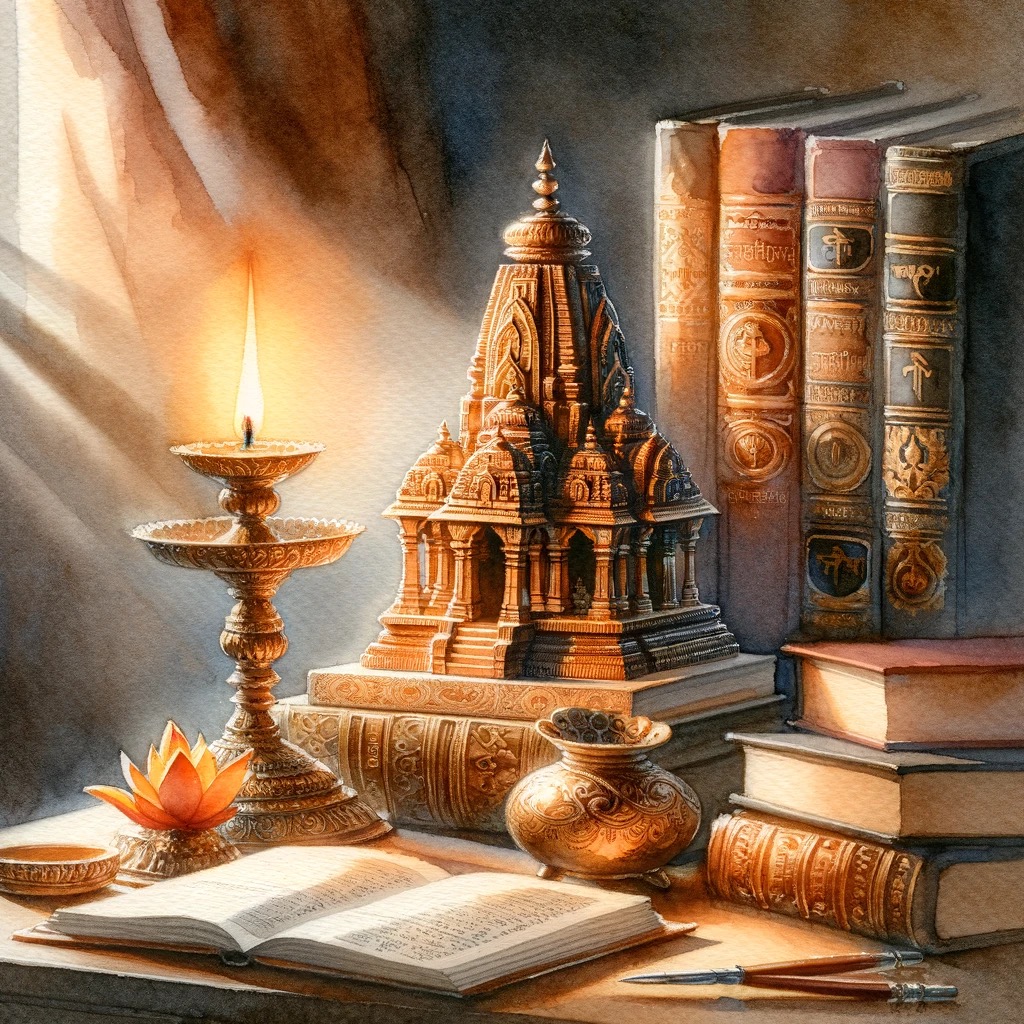Hindu Iconography
This course will discuss the Śilpakalā on the temple walls, and study the techniques of identifying (despite their ransack/plunder during Islamic invasions) and interpreting the hidden message these past sculptures offer.
Overview
सर्वप्रमाणरूपाय साकारतत्त्वमेव च ॥ ३ ॥
– ŚILPARATNAKŌŚA
Contents
Module 1
Introduction and Evolution of Hindu Iconography
Module 2
Classification of Sculpture of Hindu Devatā with Mudrās (Śarīra, Pāda, Hasta)
Module 3
Description of the Āyudhas and Vāhanas of Hindu Devatā
Module 4
Āditya, Agni, Dvādaṣāditya, Navagrahas, Aṣtadikapālas, Gaṇapati
Module 5
Viṣṇu & his forms, Viṣṇu Consorts
Module 6
Śiva and His Forms
Module 7
Brahmā, Brahmā Consort, Śakti, forms of Śakti, Saptamātrikās, Apsarās, Manmatha Rati, Aśvini Devatās, Nārada Tumburu, Saptaṛsi, Nāgas etc
Module 8
Prominent Visible Elements of Hindu Temples
Session Recordings

Module 1
Introduction and Evolution of Hindu Iconography

Module 2
Classification of Sculpture of Hindu Devatā with Mudrās (Śarīra, Pāda, Hasta)

Module 3
Description of the Āyudhas and Vāhanas of Hindu Devatā

Module 4
Āditya, Agni, Dvādaṣāditya, Navagrahas, Aṣtadikapālas, Gaṇapati

Module 5
Viṣṇu & his forms, Viṣṇu Consorts

Module 6
Śiva and His Forms

Module 7
Brahmā, Brahmā Consort, Śakti, forms of Śakti, Saptamātrikās, Apsarās, Manmatha Rati, Aśvini Devatās, Nārada Tumburu, Saptaṛsi, Nāgas etc

Module 8
Prominent Visible Elements of Hindu Temples
Sign up to view session recordings
These recordings are part of our member-only exclusive access.
Upgrade to get full access to all course recordings and other membership benefits
Key Takeaways
Discerned Svayambodha
Complete interpretation of the Hindu temple from spiritual and philosophical perspectives. Ability to identify all the gods, goddesses with their dedicated elements, and know the reason behind the specific placement of a mūrti.
Identifiable Learning Outcome
Through a process of involved-learning, participants will get worksheets and handouts for each session to go along with the facilitator. A small test will be conducted post each lesson to assess the learning outcome from the session. This gives scope to learners to make a note of the discussions in the handouts and mark a question to ask at the end of the session.
Who is this course for?
- While architecture is the physicality of a temple, Śilpa is its soul. A Hindu Temple (Devālayam) is an embodiment of the Hindu dharma that encompasses Bhārata. Every Hindu who wishes to understand temples in a better manner, wishes to propagate the meaning of temple to his peers and relations, and envisions a well-informed Hindu society is eligible.
Know your Instructors

Pankaj Saxena
Pankaj is an author on Hindu temples, arts, literature, history and culture. His writing explains the beauty of Sanātana Dharma through stories about traditions, communities and culture. He has a deep interest in cultural anthropology, evolutionary biology and ecology, and has visited more than 1600 Hindu temples.

Ramakrishna Kongalla
Śrī Ramakrishna Kongalla is an assistant professor of Indian Culture and Heritage at the Indian Institute of Tourism and Travel Management (IITTM), Government of India (GOI), Gwalior. A member of the parliamentary committee of Arts for Central Vista, he is a photographer and photoshopper at heart, working for the Reclaim Temples movement.
His interests include photographing temples across India and digitally reconstructing the ruined temples to their original forms. His specialisation is Heritage Interpretation, and he has travelled extensively in Bhārata, training tour guides across the country. He is also one of the content writers for the IITFC online course by the Ministry of Tourism, GOI, along with serving as a mentor for the Ministry of Education Indian Knowledge Systems (IKS) initiative under National Education Policy (NEP) 2020.
He is active on social media and writes extensively on Temple Architecture and their Iconography with handles like lost_temples & @artist_rama.
Our Draṣṭā online courses are designed to help you in your learning journey
Become a part of the community and engage, share, discuss and deepen your learnings
Interact with the course instructor through live sessions
Access to session recordings and materials


Become a member and dive into the Indic universe
Brhat subscription gives access to exclusive member-only content rooted in the Dharmic worldview.
Starts at ₹500 per month.